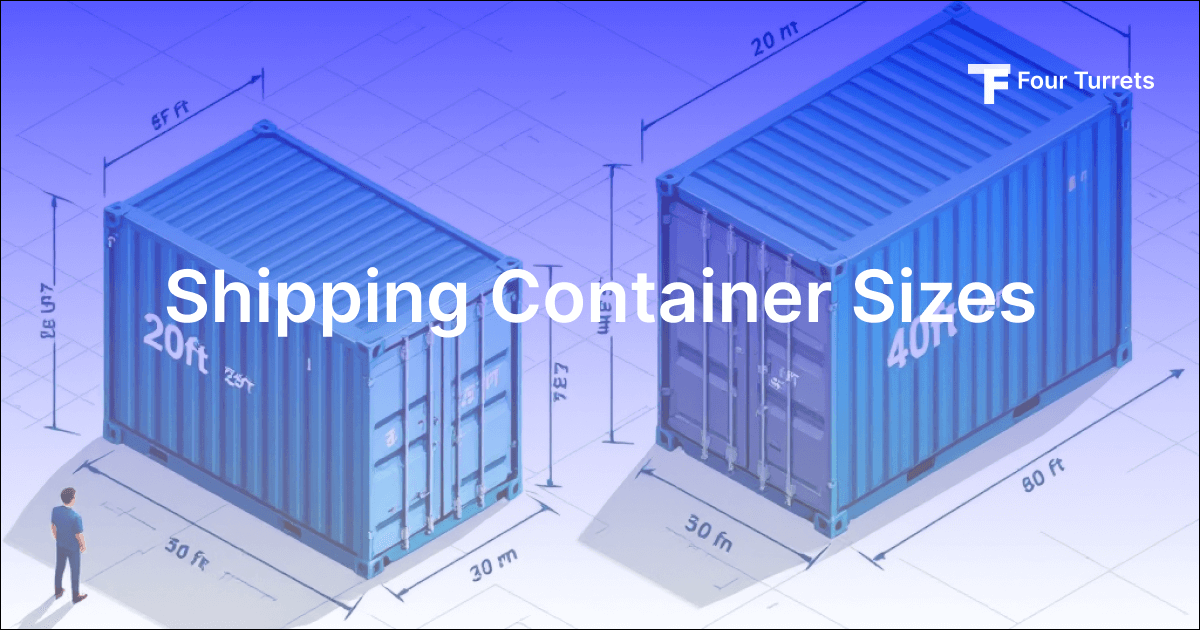Shipping Container Size & Dimension Guide: Finding the Right Fit
Shipping containers are the backbone of global trade. These standardized steel boxes are essential for moving goods across oceans and continents, and they’ve also found incredible versatility as secure storage space, mobile offices, and even unique building structures. But not all containers are created equal. Understanding the standard shipping container size and shipping container dimension options is crucial whether you’re shipping goods internationally or looking for robust storage solutions.
This guide will walk you through the most common container sizes, helping you determine the best fit for your cargo stuffing needs.
Why Do Shipping Container Dimensions Matter?
Knowing the precise dimensions of a shipping container is vital for several reasons:
- Logistics Planning: Accurate dimensions are essential for planning transportation via ship, rail, or truck, ensuring compatibility with handling equipment and infrastructure.
- Cargo Capacity: Understanding the internal volume helps determine how much cargo or equipment can fit inside.
- Site Placement: If using a container for storage or modification, external dimensions dictate site requirements and placement feasibility.
- Cost Estimation: Shipping costs and rental/purchase prices often correlate directly with container size.
Standard Shipping Container Dimensions:
While various specialized containers exist, the backbone of the industry relies on standard dry cargo containers, primarily in two lengths: 20 feet and 40 feet.
- 20ft Shipping Container: Often used for heavier cargo or smaller shipment volumes Its relatively compact size makes it easier to handle and place in tighter locations.
- 40ft Shipping Container: The most common size globally, offering double the length of the 20ft container, making it ideal for larger volume shipments or significant storage space needs.
Both standard 20ft and 40ft containers typically share a standard external width of 8 feet wide and a standard external height of 8 feet 6 inches. These standardized dimensions are often governed by ISO shipping container regulations, ensuring global compatibility High Cube Containers: Extra Height Advantage for cargo that requires a bit more vertical room, the “High Cube” (HC) container is a popular option, primarily available in the 40ft length.
- 40ft High Cube (HC) Container: This container shares the same length and width as a standard 40ft container (40ft long x 8ft wide) but offers an additional foot in height, making it 9 feet 6 inches tall externally, This extra height provides valuable additional cubic storage space, particularly useful for tall or bulky items.
Shipping Container Dimensions Comparison Table
Dimensions and capacities can vary slightly between manufacturers, but the table below provides typical specifications for the most common shipping container size options:
| Feature | 20ft Standard Dry Container | 40ft Standard Dry Container | 40ft High Cube (HC) Container |
| External Length | Approx. 20′ (6.06m) | Approx. 40′ (12.19m) | Approx. 40′ (12.19m) |
| External Width | Approx. 8′ (2.44m) | Approx. 8′ (2.44m) | Approx. 8′ (2.44m) |
| External Height | Approx. 8′ 6″ (2.59m) | Approx. 8′ 6″ (2.59m) | Approx. 9′ 6″ (2.90m) |
| Internal Length | Approx. 19′ 4″ (5.90m) | Approx. 39′ 5″ (12.03m) | Approx. 39′ 5″ (12.03m) |
| Internal Width | Approx. 7′ 8″ (2.35m) | Approx. 7′ 8″ (2.35m) | Approx. 7′ 8″ (2.35m) |
| Internal Height | Approx. 7′ 10″ (2.39m) | Approx. 7′ 10″ (2.39m) | Approx. 8′ 10″ (2.70m) |
| Cubic Capacity | Approx. 1,172 cu ft (33.2 m³) | Approx. 2,389 cu ft (67.7 m³) | Approx. 2,694 cu ft (76.3 m³) |
| Max Payload | Approx. 48,000 lbs (21,770 kg) | Approx. 58,000 lbs (26,300 kg) | Approx. 58,000 lbs (26,300 kg) |
Note: Internal dimensions, cubic capacity, and payload can vary slightly based on container construction and manufacturer.
Conclusion
Understanding the standard shipping container dimension options – primarily the 20ft Standard, 40ft Standard, and 40ft High Cube – is fundamental for efficient logistics and storage planning By familiarizing yourself with their respective lengths, widths, heights, and capacities, you can make informed decisions whether you’re shipping goods globally or seeking secure, adaptable storage space.
Frequently Asked Questions (FAQs)
Here are answers to some common questions about shipping containers:
Q1. What is a dry shipping container?
A dry shipping container, also known as a general-purpose container, is the most common type. It’s fully enclosed, weatherproof, and designed to carry a vast range of non-perishable goods that don’t require temperature control. The standard 20ft, 40ft, and 40ft High Cube shipping containers discussed above are all types of dry containers.
Q2. What is a high cube container?
A high cube container is similar in length and width to standard containers but is one foot taller Typically measuring 9 feet 6 inches in external height compared to the standard 8 feet 6 inches, this extra height provides increased cubic capacity for taller or bulkier cargo They are most commonly found in the 40ft length.
Q3. What are various types of shipping containers?
Beyond the standard dry and high cube containers, several specialized ISO shipping container types exist to accommodate different cargo needs. Some examples include:
Refrigerated Containers (Reefers): For temperature-sensitive good.
Open Top Containers: Have a removable roof for loading oversized cargo from above.
Flat Rack Containers: Have collapsible or fixed ends but no sides or roof, ideal for heavy machinery or vehicles.
Tank Containers (Tankers): For transporting liquids or gases.
Pallet Wide Containers: Designed specifically to optimize the carriage of Euro-pallets Choosing the Right Container Size.
Selecting the correct shipping container size depends entirely on your specific requirements:
Volume: Estimate the total cubic feet of your cargo or items needing shipping and storage space.
Weight: Consider the dimension and weight limits (payload) of the container, especially for dense cargo in 20ft units.
Item Dimensions: Ensure your largest items will fit through the door openings and within the internal height, especially if considering standard vs. high cube.
Budget & Site: Larger containers generally cost more and require more space for delivery and placement.


